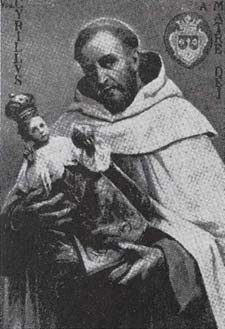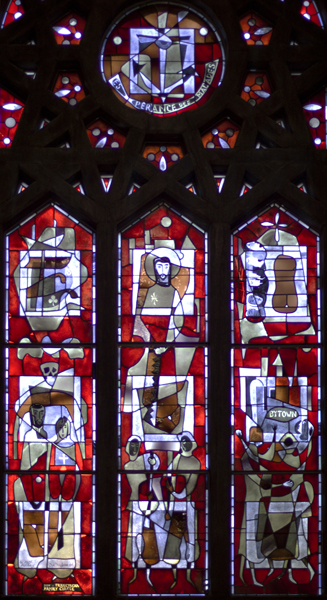Many don’t realize the incredible role Mary and Jesus — specifically The Infant — have had through the centuries in combating plague.
You heard that right: epidemics.
It was a procession by a Pope through the streets of Rome that halted a devastating outbreak of bubonic fever (along with floods and general societal mayhem) in the Fifth or Sixth century, and images of the Virgin or Infant were credited repeatedly across Europe in subsequent times with preventing bubonic from entering a village or town.
It was a disease — bubonic fever — that ended up killing a quarter to a third of those in Europe, Asia, and the Middle East in the 1300s, and while that was by far the greatest episode of the plague (known during that pandemic as the “Black Death”), there were waves and waves of it through the centuries.
Often, Mary would appear to a cowherd, young woman, or other peasant and request that a chapel be constructed. In return, the Blessed Mother promised protection. Many dozens of villages in Spain, France, Italy, Germany, and elsewhere attested to her shield from bacterial and viral waves.
It was in this way that many churches were built in the early days of Christian Europe.
Wave after wave, epidemiological brushfires, with a diabolical underside, were halted through her and the Infant’s intercession.
In Montañana la Yerma was an apparition promising that a likeness of Mary as she appeared there would “ward off pestilence and all disease.” That too was back in the fourteenth century. She was invoked, was the great Madonna, at Lyon during a bubonic outbreak in 1643. “Instantly,” noted a chronicler, “all trace of pestilence vanished.”
Can anyone forget how the Virgin of Guadalupe healed Juan Diego’s uncle of fever? He was suffering from cocoliztli, in what was called The Great Pestilence, a term assigned to millions of deaths in the territory of New Spain (present-day Mexico) in the 16th century. (It was a mysterious illness characterized by high fevers and bleeding and ravaged the Mexican highlands.)
And let us not forget that in many historic apparitions of the Blessed Mother, she was holding The Infant.
There is the city in Bohemia — Prague — that is nearly spelled like “plague.” Famous of course is the statue of The Infant from there.
As the Catholic website Aleteia has noted, “The city of Prague was protected from the plague on multiple occasions through devotion to the Child Jesus.”

“In 1635, peace came to Prague and the Carmelites returned. One of them, Father Cyril, who had previously received great spiritual help through his devotion to the Infant of Prague, sought the statue and found it amidst the rubbish.
“Overjoyed, he again placed the statue in the oratory. Father Cyril knelt in prayer before the small statue. Gazing upon the simple statue of the Child Jesus, he contemplated the most marvelous event in the history of the world, the Incarnation. He was filled with awe and wonder as he prayed to the God Who became a child because of his love for us.
“Suddenly, the statue spoke to him. Father Cyril was stunned as he heard these words of promise:
HAVE MERCY ON ME AND I WILL HAVE MERCY ON YOU.
GIVE ME HANDS AND I WILL GIVE YOU PEACE.
THE MORE YOU HONOR ME, THE MORE I WILL BLESS YOU.
“Startled by these words, Father Cyril examined the statue, and upon drawing aside the mantle covering it, he found that both hands of the statue were broken off. The hands were later restored to the statue through the generosity of a devotee of the Divine Child.”
Was the plague evil? The area of Lake Issyk in China — where the Black Death originally had been tracked — would later become a place known for weird phenomena.
A priest named Father Peter Davies writes in his booklet, The Miraculous Infant Jesus of Prague, how an infectious disease was ravaging the area, but suddenly stopped.
“The pestilence called the ‘black plague’ was raging through the land. Some of the community became ill, others had to be sent away … In all this trouble, the Prior himself was attacked by the plague, and was brought to death’s door. Father Cyril urged him to invoke the aid of the Divine Child. The Prior then and there promised that if he recovered, he would offer a novena of Masses before the statue of the Holy Infant. At once he felt relief, and in a few days was completely restored to health. He became a fervent promoter of devotion to the Divine Child, and assigned a special chapel for the veneration of the image of the little King.”

As for Joseph — known even in one place as “Hope of the Sick” — “in 1847 when a typhoid epidemic threatened the village of Bytown (now Ottawa), the chaplain placed a statue of St. Joseph in the church where people gathered each day,” note the Oblates of Saint Joseph. “The disease quickly disappeared. The top circle of the window refers to Joseph as the Hope of the Sick.”
Are we not now at a time in history — and the time of the year — to invoke The Infant with unrestrained ardor and fervor? Is this not a potent prayer for Friday?
[resources: The Last Secret and Medjugorje’s Ten Secrets]


